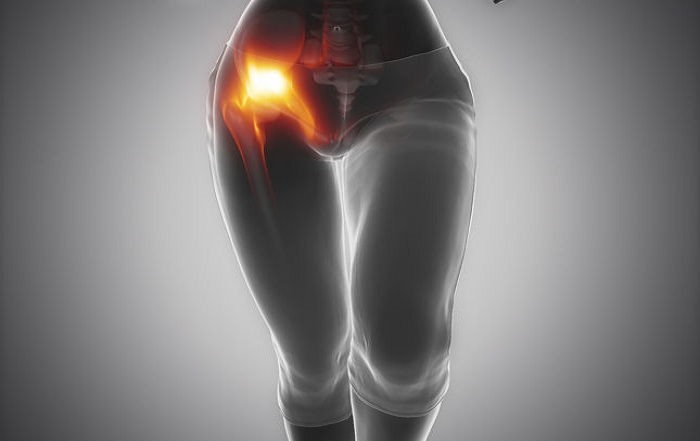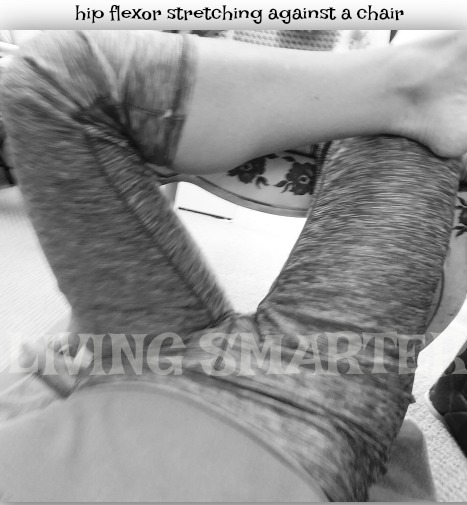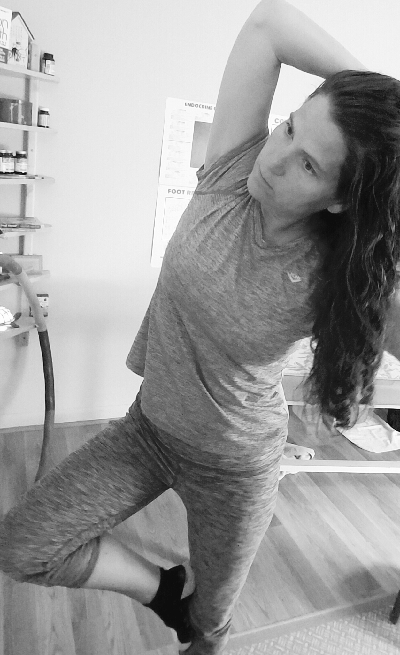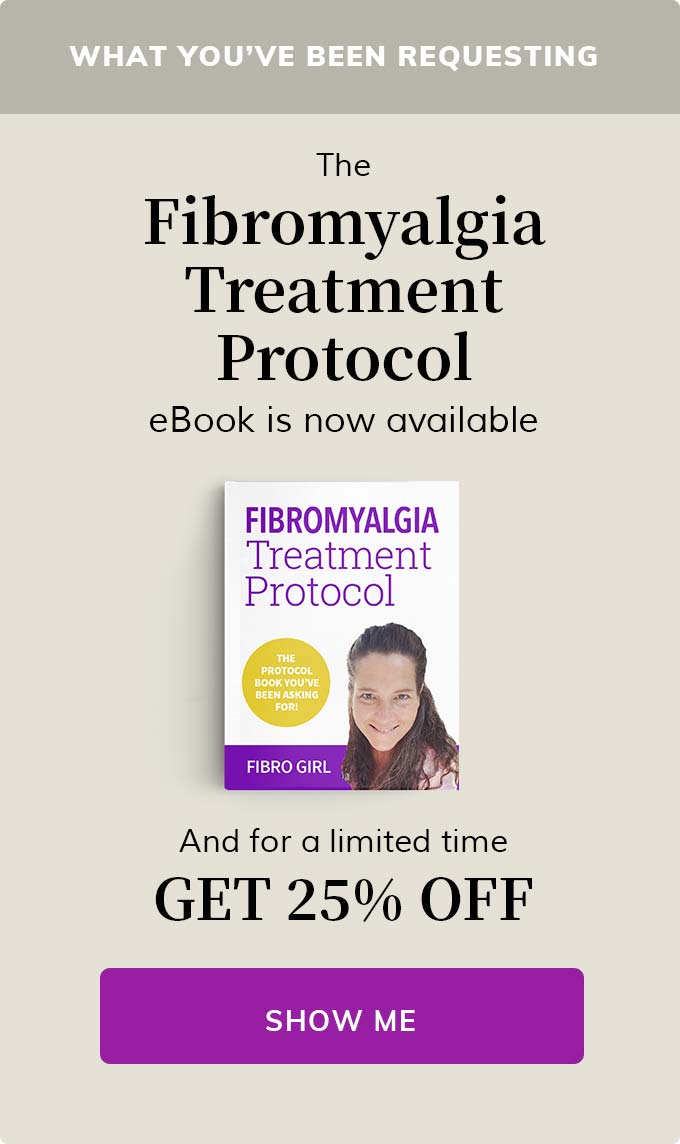Fibromyalgia and Hip Flexor Pain

We use our hip flexors quite often every day. Activities like ascending or descending stairs, stepping up onto a curb, or getting out of a car all engage the hip flexors.
As I observe peoples gait, I often see issues with hip flexors, knees, or lower back. They all work together.
I teach exercise for fibromyalgia differently than conventional exercise, it is tailored to those with fibromyalgia, but safe and effective, because we need to keep our power muscles strong and our bone density strong as well.
Muscle supports bone and healthy bones and joints support muscle.
It is not uncommon to have hip flexor issues, or pain in this area with fibromyalgia.
The hips, hip flexors, and lower back correlate with fibromyalgia pain areas due to tender areas around the lower back, many more trigger point areas and other conditions that affect the surrounding areas.
The hip flexor muscles allow your hips to move with flexibility.
You are engaging these muscles whenever you move your legs, and that means your hips are involved in most of the movements that you make throughout the average day.
A non fibro person may not realize how often they use their hip flexors, but anyone living with fibromyalgia who experiences hip flexor pain will be well aware of this on a more regular basis.
I have personally dealt with hip flexor pain and then later re-strengthening of these areas while developing more fibro safe exercises after my full hysterectomy over eight years ago. Yes, I do get it.
I will address more of this later in the lower part of this article.
While there are some known injuries and medical conditions that can cause pain in the hip flexors, it can be difficult to identify a direct cause of this pain in someone with fibromyalgia, except for the many daily activities that I often refer to.
We might treat the pain as another symptom of the diagnosed condition or take more time to determine an exact cause for the pain.
Either way, the fibromyalgia and hip flexor pain is often debilitating if not treated efficiently and promptly.
Understanding Fibromyalgia and
Hip Flexor Pain
Hip flexor pain is often referred to as flexor tendinosis. The pain from this condition typically comes from one or both of the following muscles: Illicacus and Psoas.
These muscles are often lumped together as one unit, referred to as the illiopsoas.
The psoas is responsible for a lot of general back and leg pain because the sitting positions that most people hold throughout the day cause the muscle to shorten for a long period of time.
When you stand up and start moving around again, that muscle doesn’t want to lengthen and function properly.
For those suffering from fibromyalgia, the pain may come from other muscles that help the hips move. This includes the quadriceps, even though those muscles are lower than most hip flexor muscles.
While flexor tendinosis caused by an injury or issue not related to fibromyalgia may focus on one particular muscle or area of the hip, fibromyalgia patients may experience pain that spreads out throughout this region of the body.
The cause of the pain is often unexplainable, as is typically the case with fibromyalgia pain.
Treating Fibromyalgia and Hip Flexor Pain
One simple way to prevent some fibromyalgia and hip flexor pain is to avoid sitting in one position for a long period of time.
Get up and move around periodically so that your muscles don’t have time to set in one position.
You often hear me recommending safe and effective exercise and the importance of participating in some level of exercise in order to keep your body strong and more flexible, and this is another recommendation for hip flexor pain as well.
As an alternative to straps and/or bringing the neck forward, bring a chair up to you close while lying on floor, then cross one leg over the other just above the knee, and hold.
The chair really acts as a person or therapist helping you to stretch in a safer and more effective way.
 Using a chair to safely increase the stretch
Using a chair to safely increase the stretch avoid pressing, simply lift the knee.
avoid pressing, simply lift the knee.The more you learn how to move and how angles and over compensation do matter, the easier it is to prevent some causes of muscle pain.
You can follow me on the Fibro Fit People page to learn more ways to safely and gently work these more vulnerable areas.
In the video section there you will see exercises like my “side to side” exercises that help to gently work the hips and lower back, piriformis and more. Video below this section as well.
I also work with women after hysterectomy and other abdominal surgery to gently strengthen these vulnerable areas.
I have been there, and yes, it is possible to feel strong after a hysterectomy and while living with the complexity of fibromyalgia and co-conditions.
The stretch I am performing here is great to do anytime, especially after sitting.
We draw up on one leg (no shoes) to just above OR below the knee, (this loosens the hips) then draw the arm up on the same side and feel the light stretch from your hips through your obliques. Here, I am putting my heel just ABOVE the knee, not on the knee itself.
Slightly different than yoga, what we do is more range of motion techniques for fibromyalgia. Therefore, avoid pushing into the knee or inside of opposing leg.
The idea is to lift and stretch through the movement.
AVOID INTENSIVE STRETCHING
If you spend much of your day sitting at a desk, invest in an office chair that is highly adjustable. Set the chair higher, allowing your hips to rest above your knees.
This position is healthier for your hip flexors and may eliminate pain caused by the shortening of those muscles in the typical office chair position.
You may also want to consider a standing desk that allows you to easily lift your work space.
I started using a standing desk last year and find it very helpful, in fact, I do more standing at my desk now than I do sitting. (note: some standing desks can be difficult on the shoulders to put up and down so it might be necessary to get a standing desk that uses an electric control for moving positions)
Do you also suffer with lower back pain?
If you haven't yet, scroll to the bottom of our lower back pain article here, and check out the Low Back Trax device that is both effective and easy to use!!
Regular strength training and very gentle stretching (done safely) may help keep those muscles strong and flexible. Again, be sure to avoid excessive sitting or this can sabotage efforts to incorporate effective exercise.
Thank you !! Lisa. CT. PT.
Related Articles:
Before you leave, my sitemap can provide you with a "God's-eye" view of this website laid out in "outline format".
Stay connected by joining our unique Email here at Fibro Repair Email
Home > Fibromyalgia Symptoms > Fibromyalgia and Hip Flexor Pain
Didn't find what you were looking for? Search for it:
living-smarter-with-fibromyalgia.com
©2013-2024 All Rights Reserved
FibroFitPeople, LLC ;©2024 All Rights Reserved









